
CHAMBORD CASTLE
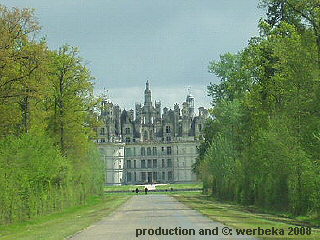 |
François d'Angoulême or Francis I became King of France in rather young years, when his uncle, Louis XII, the last in the line of Valois-Orléans, died. As an enthusiastic hunter he came often to Chambord, where since the 12th century there stood a "fortified tower", which had suited the Counts of Blois and later the Dukes of Orléans as home base for hunting expeditions. The entire area that belongs to the castle is not less than 5440 ha, that is to say, about as big as the inner city of Paris. Even in our days there is live game in the woods.
|
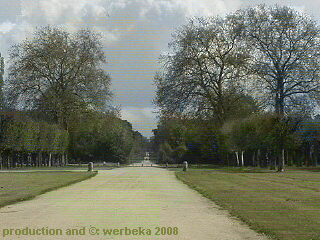 |
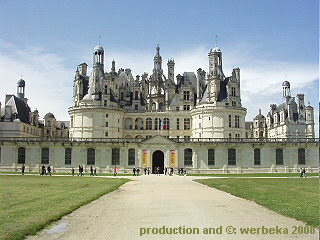 |
| The roads within the hunting-area lead off for kilometers into every direction. |
The entrance of the castle is to the South, in the direction of Italy. |
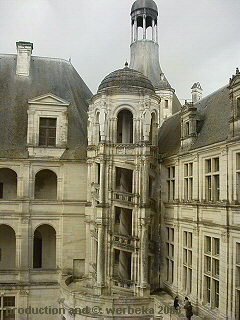 |
Through his interest for Italy Francis succeeded not only in bringing Leonardo da Vinci to France, but also to take with him the ideas of the Renaissance. This can easily be seen in the castle of Chambord, as for instance on the tower of the inner yard.
The spiral staircase is a sight of its own. It leads upwards in a dubbel helix. That means that two people can go upwards at the same time, without meeting each other. |
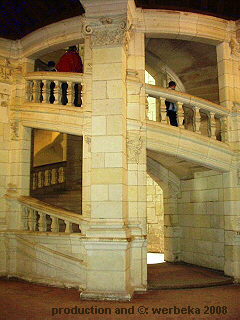 |
But they will be able to see each other, through the openings in the middle axis, provided they climb at the same speed. Then they will arrive at the same time as well. It is said, that this staircase is going back to an idea of Leonardo da Vinci. But in that case he didn't live to see it, because he died nearby Amboise Castle a couple of months before the building was started.
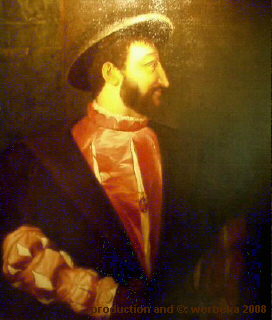 |
The building of the castle, which was started in 1519, came in 1525 to an abrupt end for the time being. Francis I had soon after his crowning conquered back Milano and through this he had made the animosity against the Hapsburgs even worse. The competition between the two leading heads in Europe had already started when both were candidates for the Spanish crown, which Charles V had won. In the battle of Pavia, which started on February 23rd, 1525, the French troops were almost entirely extinguished, the King was captured and brought to Madrid. To come free again, Francis I had to sign the Peace of Madrid in the following year, which cost him, apart from some territory, even 2 million Goldtaler. Naturally all expenses of the state were cut down immediately, especially those for new buildings. The castle was finished by Francis' son, Henry II, and later by the Sun King, Louis XIV.
|
When Francis I died in 1547, only the donjon and the King's wing were ready. At that time, King Francis had spent 72 days in his new castle.
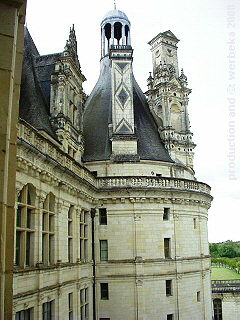 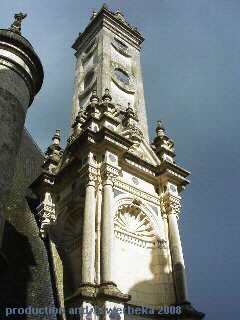 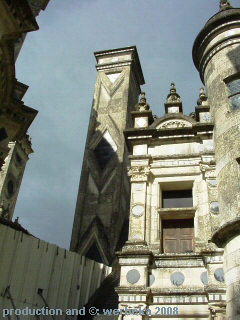
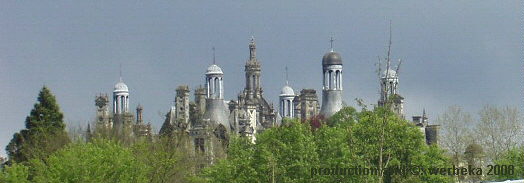 |
If Francis would have been satisfied with the looks of the castle, I don't know. But without doubt it looks, as if it had been fetched from a fairy-tale. |
Anyhow, all those small towers raise the attention of the visitor, already when seen from the car-park.
Chambord was built as a hunting seat, as we mentioned before. "Nutrisco et extinguo" was also a motto of Francis I, which in English would be: "I live (of them) and I hunt (them) down". "Them" is of course the game. Even today the hunt is a stressed point in the castle - almost all of the third floor is filled with collections of trophies and other hunting utilities. But what trophies from Italy and Austria from mid 20th century have in common with the castle, I don't really understand. As little as the local advertising for Chambord and the products, which are or have been manufactured there, fit into the exhibition. These things are as well to be found on the third and fourth floor. But enough of complaining, the castle is much too impressing, as to lose time on notwithstanding matters.
|
In all there are 426 rooms in the castle, which can be reached over 77 staircases and which are heated by 282 fireplaces. More than 90 rooms can be visited.
The rooms show the usual exhibition of paintings, big tapestries with historical or mythological themes, royal beds, crystal chandeliers, clocks, cupboards, chairs, but also the regalia of the Count of Chambord, the last owner of the House of Bourbon. This man, his full name being Henri-Charles-Ferdinand-Marie-Dieudonné de Bourbon-Artois, was at his birth seen as a gift of God. |
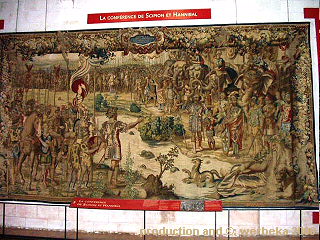
A tapestry, which shows the meeting of Hannibal and Scipio. The former has come with his elephants of war from Karthago and over the Alps. |
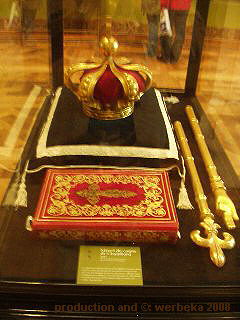 |
That was, because he was born after his father had been murdered, and thus secured the legitimate continuation of the dynasty. The Council of Ministers wanted to buy him the Castle of Chambord, but this plan was impeded by the public opinion. Therefore the "Society of Legitimists" (which was monarchistic and Bourbon-friendly) decided to buy the castle by means of donations and to give it to the young count as a present at his christening.
When Charles X, his grandfather, as well as the Count of Angoulême (who would have become Louis XIX) resigned in favour of Henry after the July-revolution of 1830, the ten year old became king as Henry V. Nevertheless he had, together with his grandfather and his uncle, to go into exile. Even after the February-revolution of 1848 and after France's defeat by Prussia, the Legitimists tried to make a king of the Count. The last attempt failed, because the Count himself refused to accept the Tricolore instead of the white flag of the Kingdom - and therefore renounced the throne. |
The gala coaches, which were thought to be in use at the arrival in Paris on the day of the crowning, never were employed and still can be seen in absolute mint condition in the coachroom of the castle. Henri de Bourbon-Artois died in 1883 in Frohsdorf Castle in Austria.
Even before the Count of Chambord, there were famous inhabitants of the castle. After Francis I, his son, Henry II came for visits, mostly for hunting reasons, but he often brought the entire family with him. Louis XIV was seen here nine times between 1668 and 1685, mainly for hunting as well. But at these occations there was at least twice some intellectual entertainment, as there were first nights of Molières plays.
The next guest was from Poland. It was the father in law of Louis XV, Stanislas Leszynski, who had been dethroned in his home country, after which he lived here in exile. |
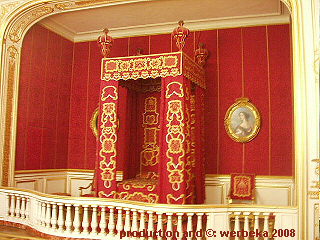 |
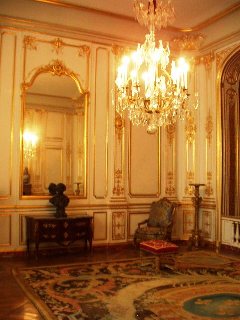 |
But this man wasn't satisfied at all with the conditions of the castle and ranted at every possibility about the unhealthy and clammy rooms.
From 1746 Marshall Moritz von Sachsen was living here, until in 1750 he fell offer to a mysterious death. In the meantime he dissipated his money in luxury with boisterous parties and spent his days together with his mistress, the actress Adrienne Lecouvreur.
In 1930 the French state bought the castle.
© Bernhard Kauntz, Wolvertem 2008
|
Back to  or to the or to the  of of 
last update: 4.11.2008 by webmaster@werbeka.com
|
















